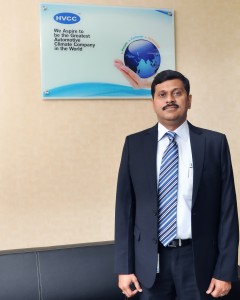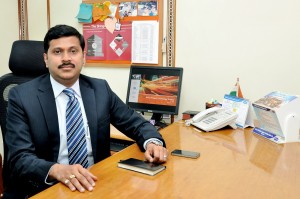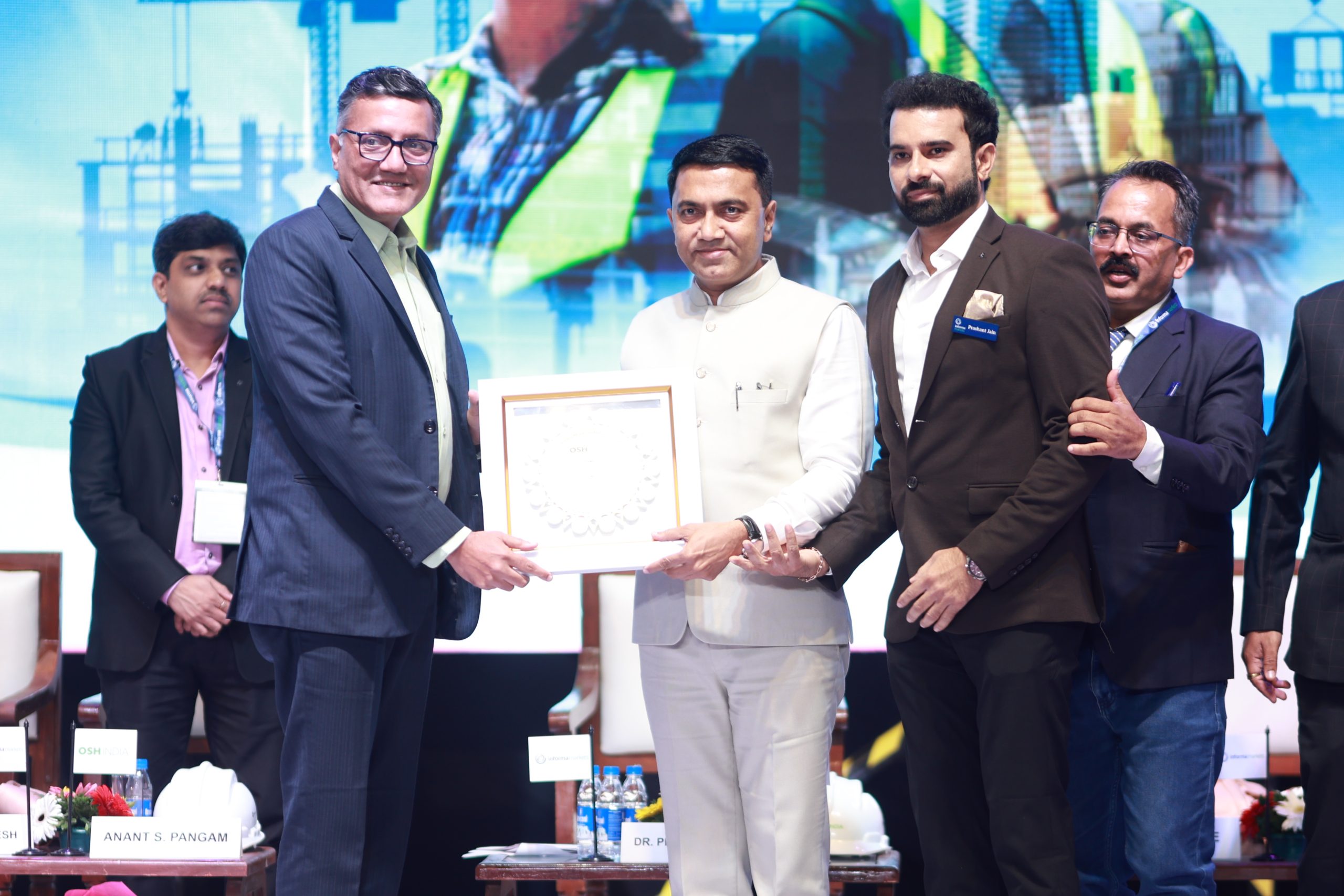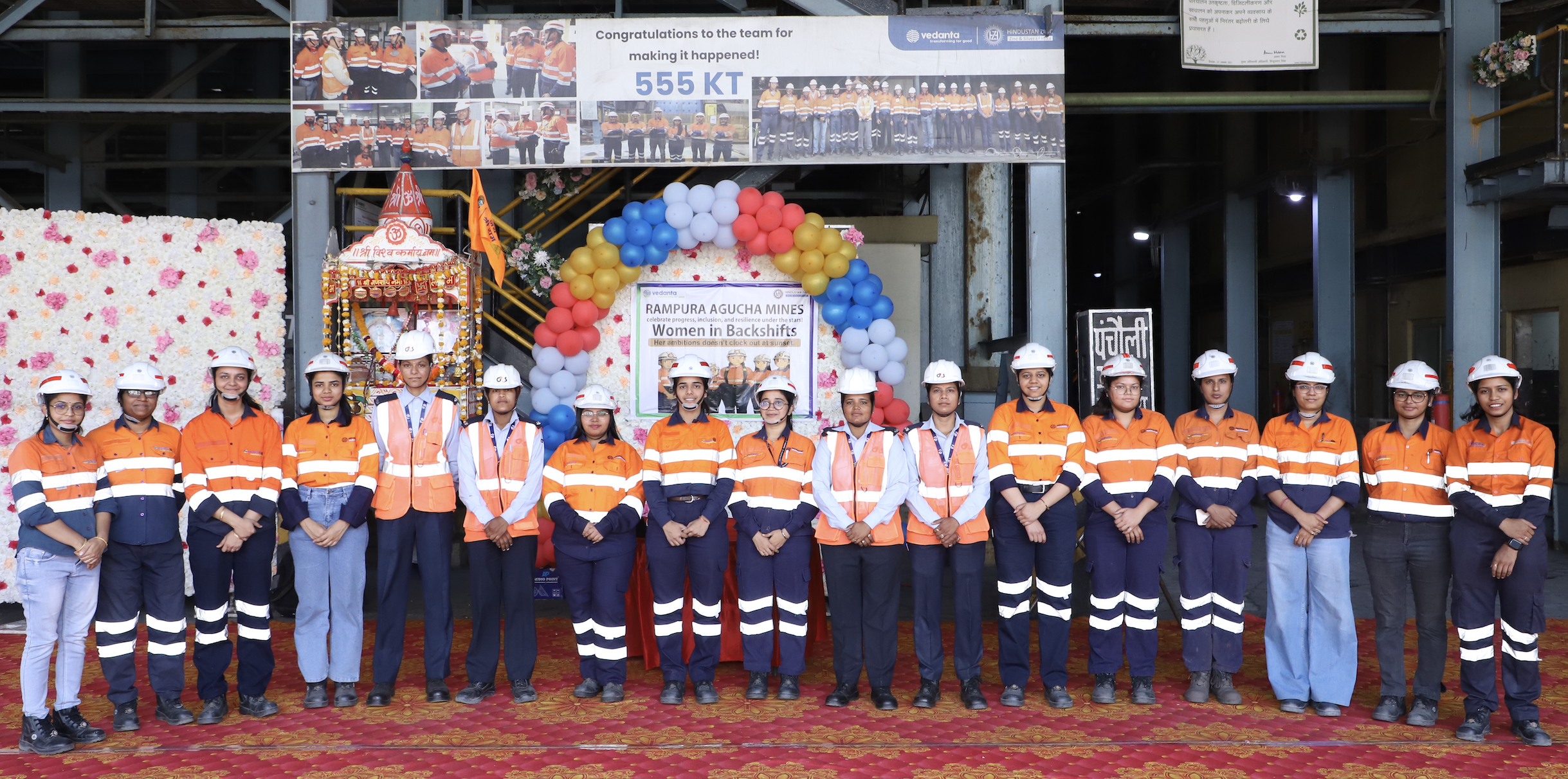 Despite continuing slowdown in the auto industry, Halla Visteon Climate Systems India Limited (HVCSIL) is confident of growth and as supporting plans in place. The Managing Director of the company Amit Gupta, who is also the South Asia Operations Director spoke to T Murrali to share his views of the company’s strategy. Edited excerpts:
Despite continuing slowdown in the auto industry, Halla Visteon Climate Systems India Limited (HVCSIL) is confident of growth and as supporting plans in place. The Managing Director of the company Amit Gupta, who is also the South Asia Operations Director spoke to T Murrali to share his views of the company’s strategy. Edited excerpts:
Q: As the one responsible for HVCC South Asia, how do you view the performance of different markets in the region when compared with those in India?
Gupta: India is a cyclical market. The auto market has been growing at double digits for last few years and now we are at single digit growth. I think, considering the GDP growth potential and the per capita growth potential in India, we should be back to double digit growth numbers in the near future. However, the markets in other South East Asian countries are growing faster. Indonesia is growing by leaps and bounds, so is Thailand. Indonesia had a CAGR GDP growth of close to 15% during last 5 years, Thailand and Malaysia had a CAGR of 9% and Vietnam and Philippines are also showing double digit CAGR growth. So you can see that the demand for cars is going to increase substantially in the region in future.
Q: How do you see these markets evolving during the next five years?
Gupta: By 2020 IHS is predicting that South Asia region (India and South East Asia) will become the fourth largest market in the world, overtaking Japan and Korea. So you can sense the importance of this region. I think the next couple of years will see major growth in these markets. Indonesia will also emerge as a major production hub for global manufacturers in the near future. And these markets have many things common in terms of vehicle demand and production trends. So we can use one of the countries as a production base or components can be distributed among countries in the region, based on their individual strengths, to achieve economies of scale also. I definitely think the region will gain much momentum in the next five years not only for domestic demand, but also for global exports.
Q: As the Managing Director of Halla Visteon Climate Systems India Limited (HVCSIL) as well as South Asia Operations Director, where do you see opportunities for growth and how do you plan to tap it?
Gupta: The mid and long term prospects for auto market in India is very promising. India is set to emerge as the third largest market in next few years and the South Asia region is poised to be the fourth largest auto sales region. Considering this, we see lot of opportunities for growth. If you look at the segments, car sales are moving up from A segment to B segment and also entry level sedans and compact SUVs are finding many buyers. HVCC has a good presence in these segments. We have provided the climate systems for Ford Ecosport and Hyundai’s Xcent and Grand i10. We are the largest suppliers for Maruti Suzuki for radiators and powertrain cooling modules. We have introduced latest products to the Indian market. Our products like slim radiators, condensers, ultra slim HVACs, IHX lines, RS and VS compressors, metal seal fittings, charge air coolers, EGR coolers, etc help OEMs in reducing weight, power consumption and increase mileage. So I think we see good opportunities and we are prepared to tap into this segment.
Q: What according to you are the key drivers for HVCC to develop new technologies that can take you distinctly ahead of competition?
Gupta: The passenger car market is driven by Asia and the emerging markets. China, India, Japan, Korea, South East Asian markets, Brazil, Russia and Mexico are the prime drivers of sales, significantly contributing to more than 50% of global car sales. However, all these markets have different requirements and regulations and this requires the OEMs and suppliers to develop new products and sometimes tweak existing products to local market requirements. This is where our expertise comes into play. We have four research and development centres spread across the globe that study the market needs and trends and develop new products for the local market requirements. The driving forces for these markets are fuel efficiency, eco-friendliness and comfort. So OEMs are looking at products that deliver these three attributes, of course at a competitive cost, especially for markets like India. And there lies our challenge – to develop quality, feature rich products at a lower cost. We have been steadily introducing products to the Indian market as you may have experienced in the Grand i10, Ford Ecosport and the XUV 500 which are distinctly ahead of competition.
Q: HVCC makes compressors, HVAC, fluid transport, powertrain cooling in addition to electric vehicle and hybrid battery cooling solutions. Do you see opportunities to make electric vehicle and hybrid battery cooling solutions in India for export markets?
Gupta: We do have electric vehicle and hybrid battery cooling products in our portfolio. As you know the market in India has not matured to that level and we are not seeing any OEM having plans to introduce a major range of electric vehicles here. However, if any OEM comes up with any concrete plans for the domestic market or for export markets, we will be in a position to support them as our products are already in operation in some of the major electric vehicles around the globe.
Q: HVCC does not have a tech centre in India while your JV partner Visteon has one – Why? Are you looking at setting up one here?
Gupta: We have application engineering centres at our Bhiwadi and Chennai plants. However, we do have plans to set up a regional R&D centre here in India which will undertake innovation projects and research for India and South Asia market requirements.
 Q: Due to regulations and also to reduce the footprint on roads, OEMs are shrinking their vehicles while enlarging the interiors – leaving little room for players like you to operate. How do you see these emerging changes and how do you address them?
Q: Due to regulations and also to reduce the footprint on roads, OEMs are shrinking their vehicles while enlarging the interiors – leaving little room for players like you to operate. How do you see these emerging changes and how do you address them?
Ans : Our new range of products is addressing this trend of OEMs. For example, the slim HVAC that we have provided in Grand i10 is a lightweight, space saving, powerful system. In the same way, we have the slimmest radiators in the world, measuring 10.8 mm, which are used in Ford Ecosport. We also have slim condensers, lightweight powertrain cooling systems etc. All these products are a result of innovations to cater to this changing market trend. Our focus is to produce more fuel efficient, eco-friendly and comfort providing products for the OEMs.
Q: Are you following platform based concept to leverage the economies of scale?
Gupta: As you are aware, OEMs are now going for platform based vehicles. So you have a platform developed by an OEM which is used for multiple segments, like the Honda Brio or the Swift or the Xcent or the upcoming Datsun Go range. So for the OEMs this is a kind of standardisation. They don’t change the engine specs, they don’t change the cockpit, they don’t change the AC system. Only the external of the vehicle looks different based on what segment it is positioned in. OEMs save on cost and produce economies of scale with such an effort and we are also supporting OEMs in this venture. So for a supplier, if he wins a business of a platform across segments, this will be a big cost saver and will provide economies of scale.
Q: Quality has become a hygiene factor long ago and what is your USP to win customers?
Gupta: You rightly said that quality has become the hygiene factor thereby making differentiation difficult. However, we would target to bring quality in every aspect of business, not only products, with focus on developing a quality mindset culture. We have experienced this culture getting developed with the Shingo model deployment at HVCSIL and we plan to take it to other locations.
Q: Can you comment on getting the Shingo Silver Medallion?
Gupta: It feels great to win this award. We are the first manufacturing facility within the HVCC family to win this coveted recognition and the second company from India. We have learned a lot since we started on this path towards the Shingo recognition. The Shingo principles have managed to give us a new direction and we can say, for sure, that we as an organisation have grown by leaps and bounds. The Silver medallion is an acknowledgment of the efforts we have so judiciously put in all these years.
Q: How has this milestone in HVCSIL’s journey changed the way your company has been operating?
Gupta: It all started when we sat as a site leadership team in 2009 to put together our 2016 Vision and identified the need to be a ‘world class organisation’ using the Shingo model. The plant has been working vigorously in adopting systems that complied with the principles of excellence and continuously fine-tuning the requisite tools to further strengthen our systems.
A strong focus on having a lean plant was put into place with a system of continuous training and guidance that led to a culture of continuous improvement across the various levels and departments in the plant. An organisation development intervention programme implemented throughout the organisation helped people adopt the requisite behavior to become principally driven.
We have also strengthened our product development processes with support of global R&D and are completely aligned with our customer expectations. In fact, now we have a government certified R&D centre at our plant in Bhiwadi since 2011.
A huge amount of effort also went into percolating the vision, mission and objectives of the company down to the lowest level of employees. Every person in the organisation not only knew the plant and departmental objectives but also knew how they were derived and why they were important. Thus I would say every employee in the company stepped up his efforts in the journey towards excellence.
This team effort resulted in a 95% reduction in warranty claims, a 100% reduction in customer-written concerns, 21% savings in energy costs, 35% savings in variable costs and many more such achievements.
Q: How do your customers perceive this achievement?
Gupta: Customers are obviously happy. Operational excellence initiatives have direct benefits for the customers because, after all, we make continuous improvements towards improving quality and cost competitiveness of the products. It is a matter of pride for them that one among their suppliers is a Shingo medal winning organisation. In fact, operational excellence has helped us to be recognised by our customer, Maruti Suzuki, with various awards including the Overall Excellence Gold award last year.
Q: Is it helping your company in improving the bottom line?
Gupta: Operational excellence involves improvement in all aspects of plant operations and when there is improvement in all areas, then the obvious result would be improvement in bottom lines in the mid and long term. The Shingo model has helped our organisation improve our quality levels, improve our operational efficiency, energy savings in plant operations and improve our cost competitiveness. The model has also helped our employees change their attitude towards their work and organisation. All these will culminate in a more cost competitive and efficient organisation which will have its cascading effect on the bottom line.
Q: What are the downsides, if any, of getting the award?
Gupta: The award brings with it more expectations from us and thrusts on us more responsibilities. We cannot afford to let our guard down. This award is not an end in itself. The operational excellence model is a continuous journey and we need to move on that path continuously. Therefore our entire team needs to be on alert, continuously work towards keeping our quality intact, safety of the plant as top priority, manage operations efficiently and bring the best out of our employees.
Q: What is the way forward for your company?
Gupta: We are committed to this path of operational excellence and are working towards the Shingo Prize which is the “Oscar” of Operational Excellence. We have also extended the model to our sister plants at Chennai and Thailand, where the initial steps to implement the Shingo Model has been taken.
Q: Tell us about the short term and long term plans for a) HVCSIL and b) HVCC.
Gupta: HVCC came into existence last year by the merger of HCC with Visteon’s climate business. Our vision is to become the greatest climate company in the world and we are working towards that in full earnest. Last year we made $4.8 billion globally and we want to keep that growth momentum intact. We have a healthy backlog of new business wins. However, as a company our plans would focus on taking the operational excellence model across our plants, innovate with new products based on various market requirements and be competitive on cost and quality. We will also be focusing on creating an excellence organisation, and create eco-friendly and fuel efficient technologies so that we continue to support our OEM partners to grow in the markets across the globe.
HVCSIL has been in existence for over 20 years now; it has had a successful JV with Maruti Suzuki and has been focused on meeting their expectations as a key customer. We expect to continue working towards challenging ourselves to meet our customers’ expectations by bringing right technology competitively. We expect to keep moving ahead on the excellence journey and support HVCC’s vision and plans for India.









Leave a Reply